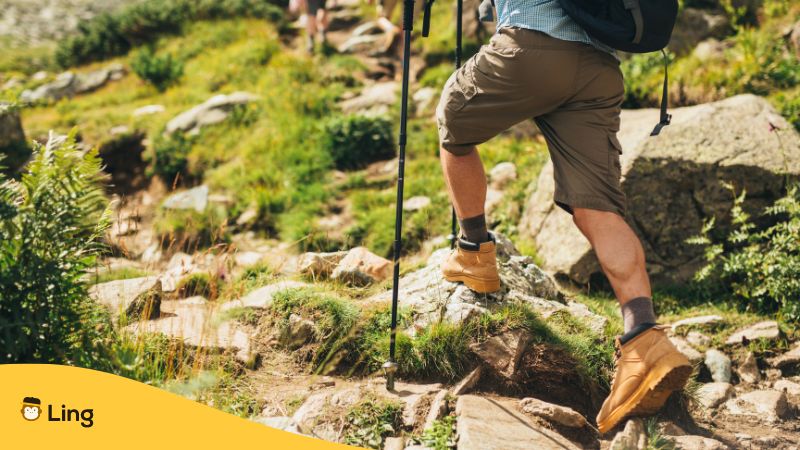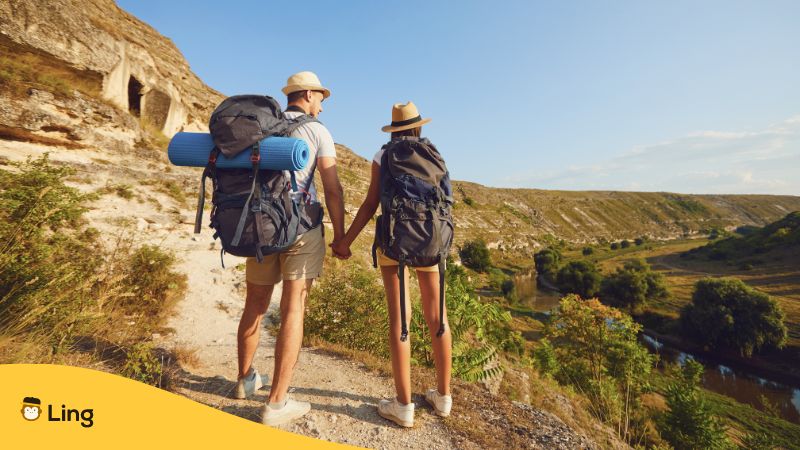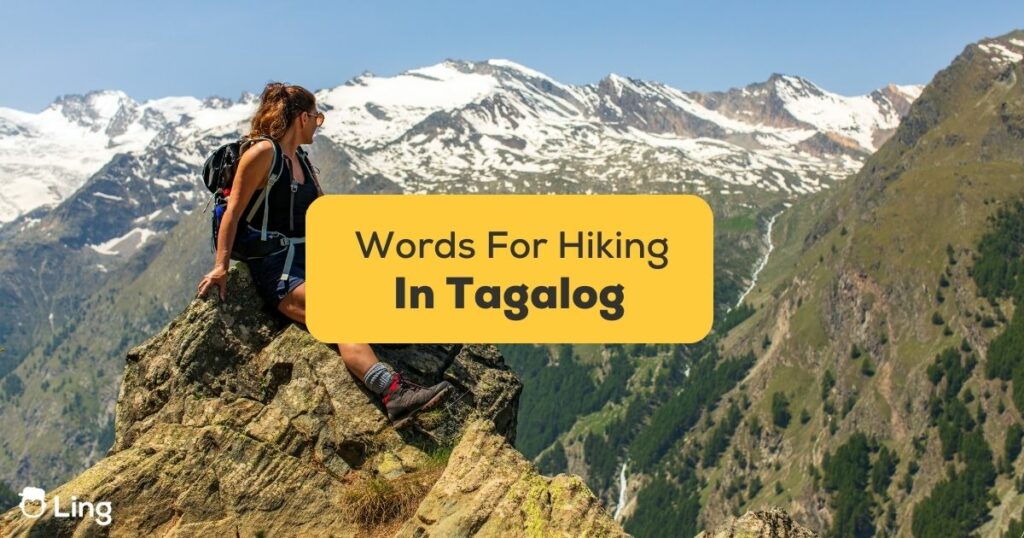Ready to give your adventurous spirit an offbeat twist? Well, lace up your hiking boots, refill your water bottles, and fasten your linguistic seatbelt–we’re about to get knee-deep in some Tagalog words for hiking! Tagalog, the major language of the Philippines, is progressive and richly expressive as a jungle in full bloom. It’s a goldmine for nature enthusiasts, and not just because of the country’s glorious landscapes. Tagalog has a vivid array of words that perfectly frame hiking experiences. So, let’s savor these Tagalog words, shall we?
Think of the last time you found yourself hiking—a little sweaty, a tad out of breath, perhaps, but glowing with the satisfaction that comes from journeying through unspoiled nature. Now, imagine narrating that journey with these Tagalog words. You see, Tagalog not only provides a new linguistic turn to your hiking adventures but also connects you with the vibrant culture and stunning landscapes of the Philippines. Ready to learn more? Read more!

What Is Hiking In Tagalog?
Actually, there is no direct translation for the word “hiking” in Tagalog. However, when you lace up those boots and decide to take on Mother Nature’s stair-master, the locals usually use the catch-all word for a “pamamasyal” (pronounced pah-mah-mah-shal). Ah, doesn’t that have a certain ring to it? You can almost hear the rustling sound of lush tropical leaves and the call of exotic birds!
In addition to “pamamasyal,” you can also use “paglalakad” (walking or trekking) and “pag-akyat” (climbing) to paint the picture of your high-altitude escapades. Doesn’t “paglalakad sa kabundukan” (trekking in the mountains) or “pag-akyat sa mga bundok” (climbing mountains) resonate with the heart-thumping rhythm of your adventurous spirit?

Do Filipinos Enjoy Hiking?
Filipinos, with their innate “lovers of nature” spirit, hold a special place for hiking in their hearts. The country’s bountiful natural beauty – a playground of over 7,000 islands threaded with breathtaking trails and majestic mountains – is genuinely irresistible for anyone with an itch for adventure.
Now, where do Filipinos commonly hike, you ask? Well, buckle up, because we’re about to explore their most-loved trails – a lexicon of diverse ecosystems all within the archipelagic charm of the Philippines.
Mt. Pulag
This is not just any mountain; it’s the third highest peak in the country. The locals fondly call it the “Playground of Gods.” Now, who wouldn’t enjoy hiking with a title like that?
Mt. Apo
Staying at the top, quite literally, is Mt. Apo – the highest mountain in the country. With a tantalizing mix of geothermal activity, pristine lakes, and lush rainforests, Mt. Apo is a love letter to all hiking enthusiasts.
Mt. Batulao
In the south of Manila, Mt. Batulao stands proudly with its grassy slopes and open trails, an enticing invite to beginner and experienced hikers alike.
Mt. Daraitan
Last but not least, Mt. Daraitan offers a full-package deal – stunning limestone formations, clean rivers, and a richly diverse flora and fauna canvas. It’s a symphony of ecological wonders that any hiker would cherish.
So, there you have it. Filipinos don’t just enjoy hiking; they live it, being blessed with a treasure trove of hiking spots. Keep your adventure spirit alive and keep exploring the Philippines while using the Tagalog language.
Common Tagalog Words For Hiking
Hold on to your hydration packs, fellow trail-trekkers! We’re about to hike through the vocabulary valley of Tagalog hiking words. These linguistic gems will have you sounding like a true Filipino mountaineer on your next ascent. Let’s hit that Taga-lingo trail with gusto!
Bundok (Mountain)
This is the holy grail of hiking destinations! “Bundok,” which means ‘mountain,’ is the one word that dominates every hiker’s conversations. It’s where paths are forged, summits are conquered, and stories are made.
Parang (Grassland)
Sometimes, a hen-peck-free hike calls for the open, breezy trails of a “parang.” It means ‘grassland’ and is just the thing for those who like their hikes with a side of sprawling greens and endless horizons.
Masukal (Dense/Unexplored)
In true Indiana Jones fashion, we venture into the “masukal,” which means ‘dense or unexplored.’ Whether you’re hacking through thickets or tiptoeing across a valley’s hidden gems, the masukal is where adventure truly begins!
Tuktok (Summit)
Aim for the sky, they say. We prefer to say, aim for the “tuktok!” That’s ‘summit’ in Tagalog. After all, what’s a hike without that thrilling final push towards the highest point? Whether it’s your first or fiftieth, reaching the tuktok never loses its charm.
Lawa (Lake)
Here’s something to refresh your tired hiking legs: the serene, placid waters of a “lawa,” or ‘lake.’ With picturesque reflections of the sky above, it’s the perfect stop for a rejuvenating lunch break on your hiking journey.
Look (Volcano)
What could possibly up the ante for an adrenaline-boosted hike? A “look,” of course! A ‘volcano’ in Tagalog, the look is a fiery reminder of the raw and fierce beauty of Nature. Proceed with caution!
Kalikasan (Nature)
Here’s where it all comes together, the real star of the hiking show: “kalikasan,” meaning ‘nature.’ Kalikasan is the orchestra conductor behind the harmonious symphony of birdsong, rustling leaves, and babbling brooks that accompany every hike.
Pahinga (Rest)
Pumping those legs non-stop can be tiring. Enter “pahinga.” This lovely Tagalog word gives voice to our need for ‘rest.’ So, take a break, catch your breath, and remember the joy of the journey.
Hamon (Challenge)
No worthwhile hike lacks a ‘hamon’ or ‘challenge.’ Steep inclines, tricky terrains, or unexpected weather – a hamon turns a simple walk into a zestful hike!
Ligaya (Joy)
The grand finale – the “peak performance” – the ultimate hiking high, is nothing but pure “ligaya,” or ‘joy.’ It encapsulates the thrill, the beauty, and the fulfillment that come with every hike’s completion.
Tanawin (Scenery)
Last but not least, feast your eyes on the “tanawin” – the ‘scenery’ that rewards you for all that hard-earned sweat and muscle-pumping. Breathtaking vistas are the language of a hiker’s soul, tying together all those captivating Tagalog terms like a colorful sash on your backpack.
Learn The Tagalog Language With Ling
Ah, what a journey of linguistic adventures we’ve had, dear readers! Who knew the world of hiking and Tagalog could intermingle so beautifully? You’re now armed with an array of Tagalog words to create your hiking story’s splashy narrative.
But, wait! The trail doesn’t end here! Quench your thirst for language with the Ling app, available for download on the App Store or Play Store now. Soaring above mere language learning, Ling brings a world of culture, cuisine, and conversation, straight to your fingertips. Give it a try now!


































































